I highly don't recommend buying honey in the stores. Most of the times it's just a sugar syrup that won't bring you any value
How to Choose Tasty Food in the Supermarket: A Guide We All Need
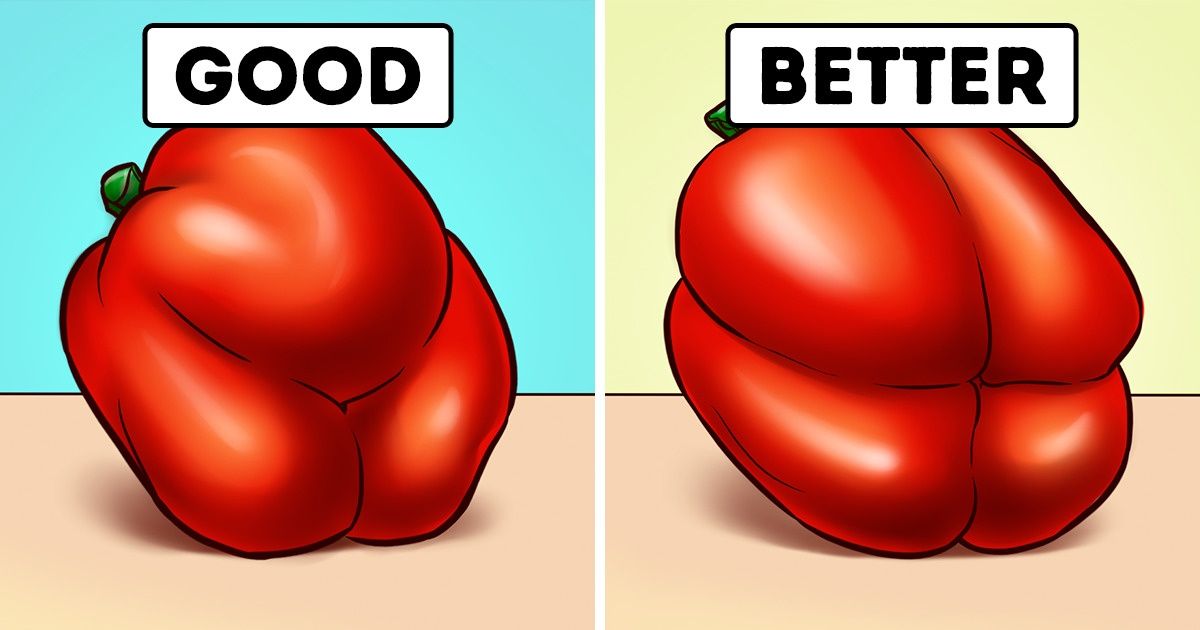
A sweet watermelon has a brown stem and you will find fresh chicken by checking its packaging date. Even if you think that your shopping bag is full of fresh products, maybe you haven’t used all your senses to choose the best ones. Touching the right part of a melon or checking the downside shape of a bell pepper can make a difference in how our dishes taste.
Here at Bright Side, we’ve collected 12 healthy foods and prepared a guide full of tricks on how to choose items for the freshest menu.
1. Bread
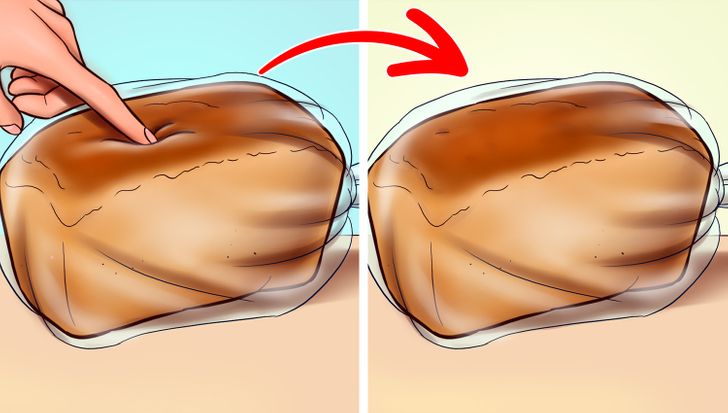
- Go to the ingredients label and look for the first word on the list. If it’s “whole-wheat flour” you’ve made a good choice. This flour will provide you with more fiber and vitamins than “enriched bleached flour.”
- Lightly press on the bread. If it returns to its original form, this is high-quality bread. If your fingermark remains on the bread, it might be a sign of an incorrect baking process or that it has been previously frozen.
2. Chicken

- We need to check the different colors of the cut. If it has skin, it should be paler than the flesh. If the skin of the chicken is yellow or light brown, leave it on the shelf.
- The flesh must be firm, white to light brown, moist, and without blood. Be attentive to the edges as well. If they look dry, don’t pick it.
- Don’t check the expiration date, check the packaging date instead. If it’s been in the container for more than 2 days, leave it in the supermarket.
3. Watermelon
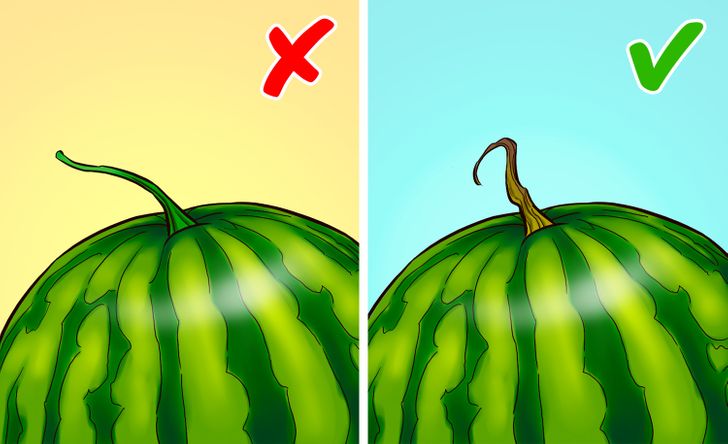
- Look at the stem tail. If the watermelon has a dry, brown stem, it means that it’s ripe and ready to eat.
- Check the intensity of the yellow areas the watermelon has. This yellow part corresponds to how much time the fruit has been resting on the land connected to the plant. If it has a dark yellow spot, it will be a sweet watermelon.
- To detect a good one, we need to check its loudness by tapping it. If this sound is lazy, as if it echoed, it indicates that the fruit is not yet ripe. If the resulting sound is hollow and blunt, the watermelon will be at its right point of maturity.
4. Tomatoes
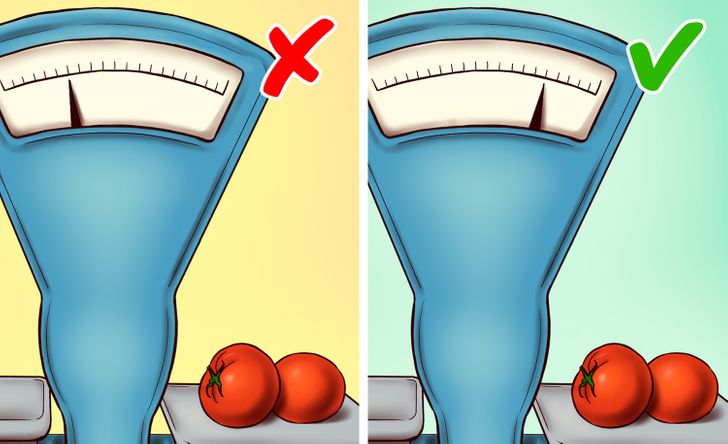
- Whenever possible, avoid buying tomatoes in plastic containers. This is because you won’t be able to check if they’re fresh and the same container can include pieces in different ripening states.
- The skin should be smooth and firm and when you take it, you should feel a consistent weight. A ripe tomato can double the weight of an unripe tomato.
- Smell it. If you detect nothing, the tomato hasn’t matured yet. Tomatoes must smell like tomatoes, especially where they connect to the stem.
5. Melon
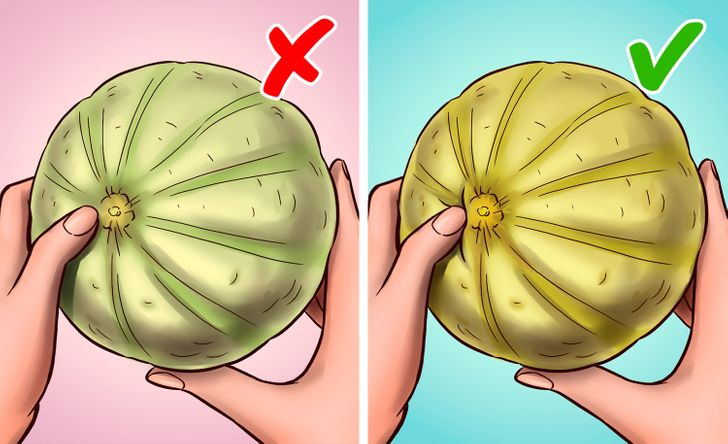
- The bark of a sweet melon shouldn’t be too green. If it has yellow tones, that indicates the melon has spent enough time on the ground receiving sunlight and therefore, it will be sweeter.
- Take the melon and tap it on the side. If it vibrates, the melon will be at its ripe point.
- You can move it near your ear. If you hear water inside it, this means that it has matured too much and has begun to deteriorate.
- Touch the 2 ends of the melon and apply a bit of pressure. If they’re soft, the melon will be sweet.
6. Pepper

- The first thing to check is if the pepper has an intense color without stains. When you pick it, it may have a consistent weight.
- Then you need to look below. If it has 2 or 3 bumps, it will be more bitter than if it has 4 bumps. In contrast, peppers with 4 bumps have fewer seeds which can make them more practical for recipes in which they will be cooked.
- Check the state of the stem. If it’s green, firm, and crispy, this is a sign of freshness.
7. Fish
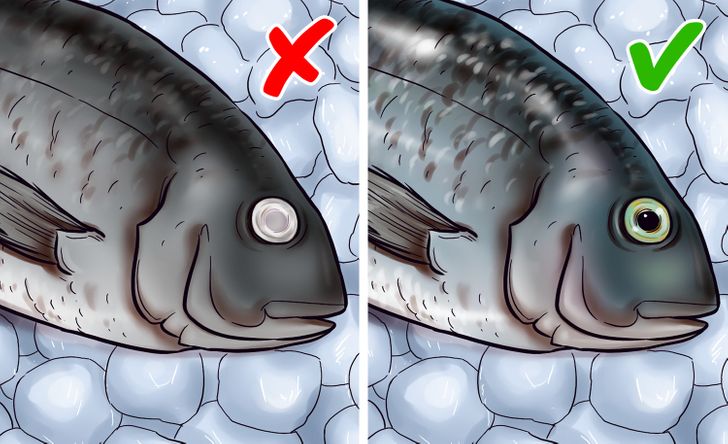
- First, look at the fish in the eye. Check to see if the eyes are protruding and that the pupils are a shiny black color.
- The skin should be bright and silky to the touch. If you feel the skin being sticky or dull, the fish is not fresh.
- Keep in mind that the flesh has to be firm and translucent with an elastic, smooth surface. If you squeeze a fish fillet, there should be no trace of your fingermark.
8. Zucchini
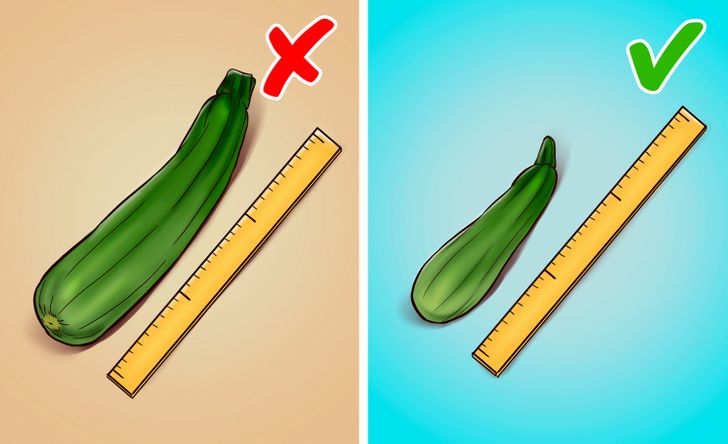
- Focus on the size, as this is important to the flavor. The bigger it is, the more likely that the zucchini will be bitter. Choose the medium-size ones, between 15 and 20 centimeters. They will have fewer seeds than the bigger ones and therefore, will be more meaty and tasty.
- Then you can check the stem. If the cut of the stem is fresh, it should be green.
9. Bananas
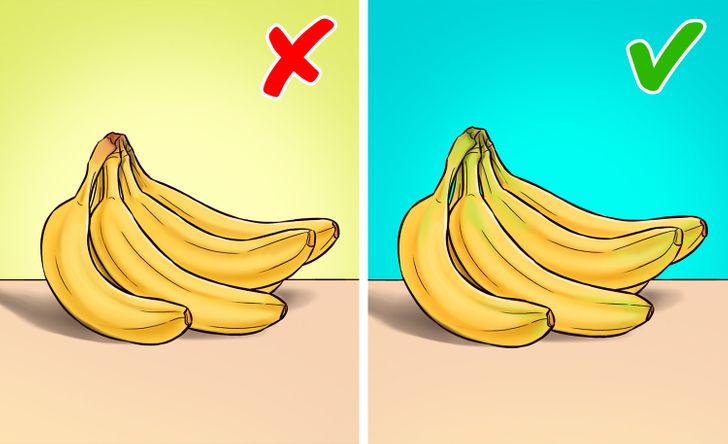
- Check the stem of the bunch. Pick the bunch with green to light yellow stems. If the stem is turning brown and the bananas have a lot of black spots, it’s a clear sign that the bunch is too mature.
- Bananas last longer if they’re kept in clusters instead of separately. Don’t pick an isolated banana unless you’re going to eat it right away.
10. Honey
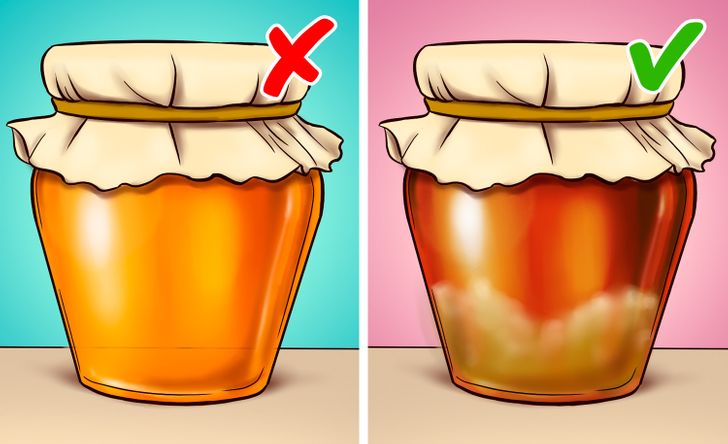
- Translucent honey doesn’t mean it’s better. The color intensity can vary, but if the honey is opaque, that means that it’s more natural and less processed and therefore, more natural and with greater properties.
- Fresh honey can crystallize more easily when temperatures drop. Honey is a supersaturated solution in sugar, so when temperatures drop, their solubility in the little water they carry decreases, and they form solid crystals. It’s fine if a honey jar has a more consistent layer at the bottom, it’s a sign of its freshness.
11. Lettuce
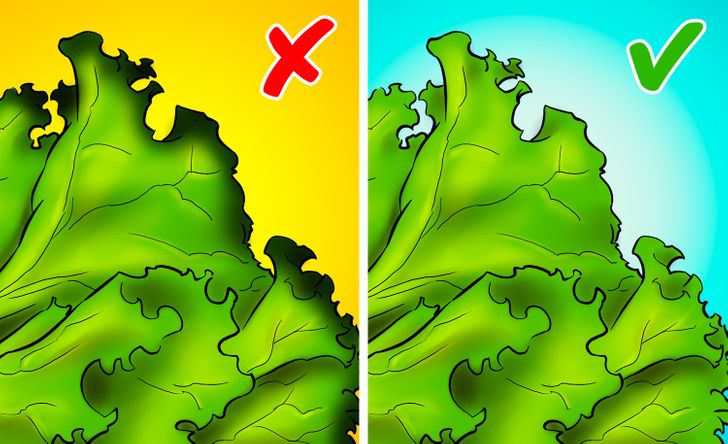
- Regardless of the variety of lettuce, try to check that it doesn’t have holes or leaves that have been eaten away. Also, select ones that are free of brown edges.
- Its color should be light or dark green and very bright. If the color is off and the outer sheets are not firm, avoid that lettuce.
12. Canned foods
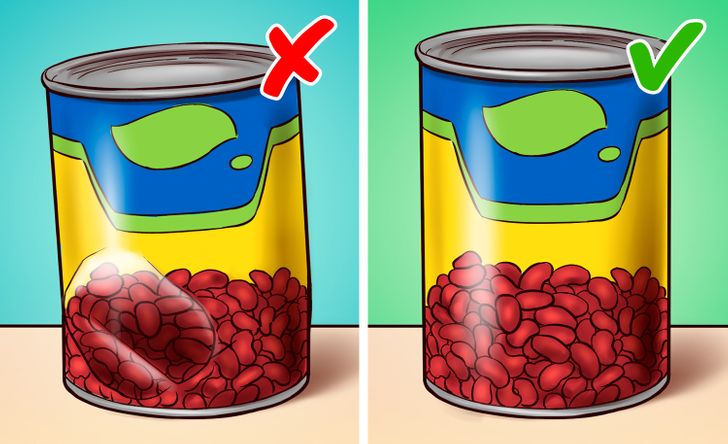
- We need to be sure that the package is perfectly closed. Be attentive to any imperfections in the package structure. Never take a bulky or rusty can, it could be dangerous.
- In the case of canned food, we’re not able to check the physical characteristics of the product with our senses, so we have to carefully check the label. Verify that levels of salt and sugar aren’t too high. It’s preferable to buy canned food that has been preserved in water or in its own juice with the least amount of preservatives.
13. Cheese
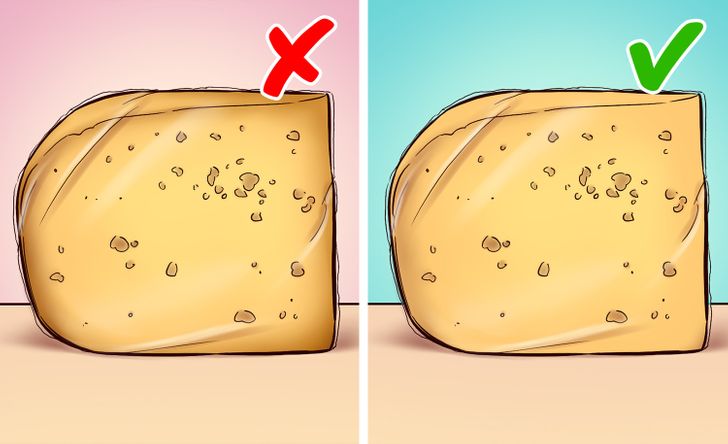
- A piece of cheese with a wide crust indicates that it’s not fresh. Cheeses need moisture to evolve and stay in good condition, so the bark will tell us how long it has been cut.
- The existence of an oil film on the crust indicates that the cheese has been exposed to several temperature changes and therefore, has released oil from its interior which causes it to become rancid.
Do you put these tricks into practice? Do you have other tips you want to share with us to complete this guide?
Comments
Always go for the bright and colorful food!
I knew about the cans. NEVER buy those that have any kind of imperfections
My mom taught to choose eggplants that have "thin" heads. They have way less seeds ?
it is okay ???
Related Reads
12 Unseen Sacrifices Moms Make to Put Their Kids First

My MIL Mocked Me at My Husband’s Birthday Party—I Gave Her a Brutal Reality Check

I Banned My Stepdaughter From Family Meals, My House Is Not a Master Chef Venue
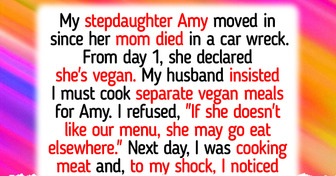
10 Moments That Proved the Worst Betrayal Comes From Home
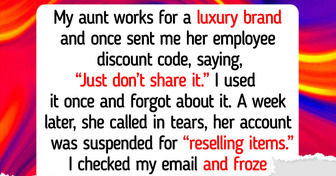
15+ Unforgettable Gifts That Made an Everlasting Impression

I Didn’t Give Up My Parking Spot to a Mom With an Infant — I Served Her a Reality Check

12 Acts of Kindness That Prove the Human Spirit Is Truly Unbreakable

My MIL Insulted Me in Public—I Taught Her a Lesson

My MIL Moved in ‘for an Emergency’—Now She Refuses to Leave

13 Stories Proving That Female Solidarity Turns Ordinary Women Into Legends

My MIL Wanted Me to Be Her Free Maid — She Didn’t Expect My Next Move

My Landlord Refused to Fix My Home—So I Gave Him a Taste of His Own Medicine
